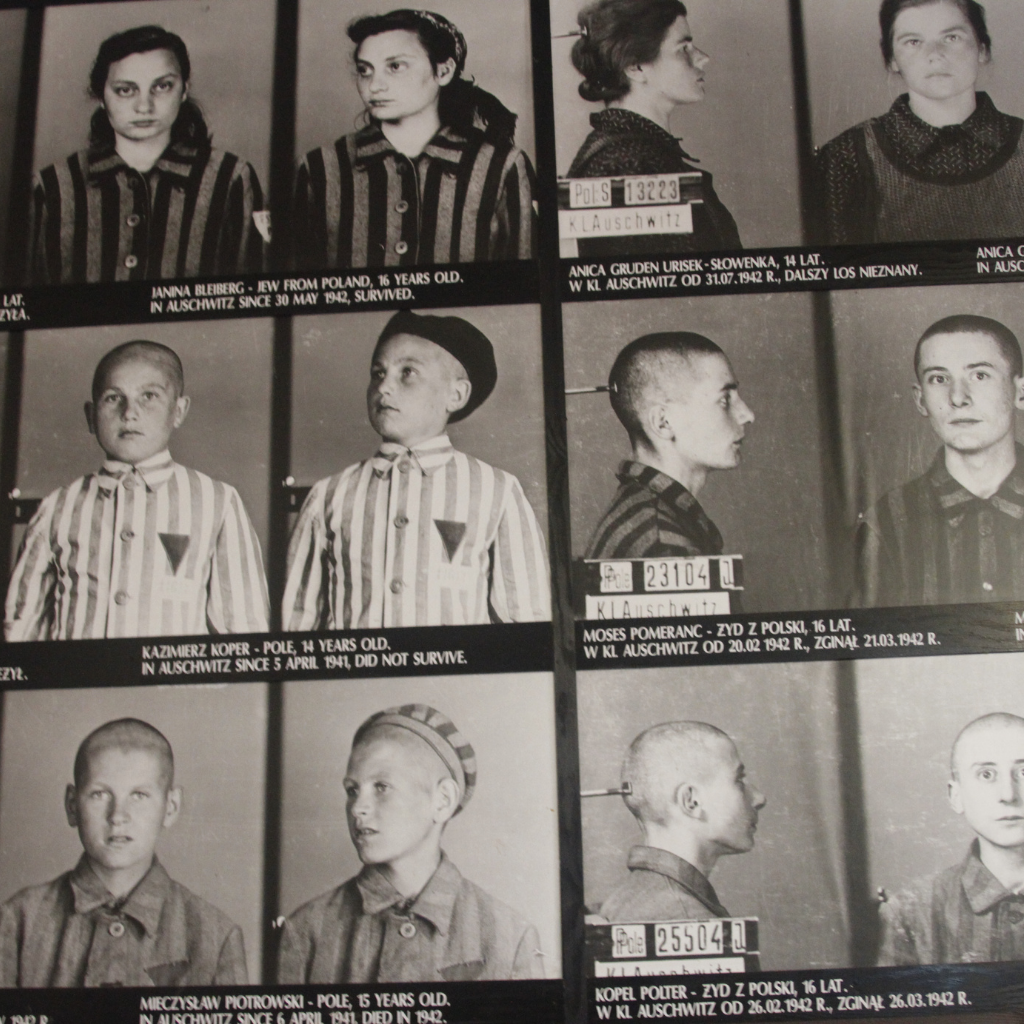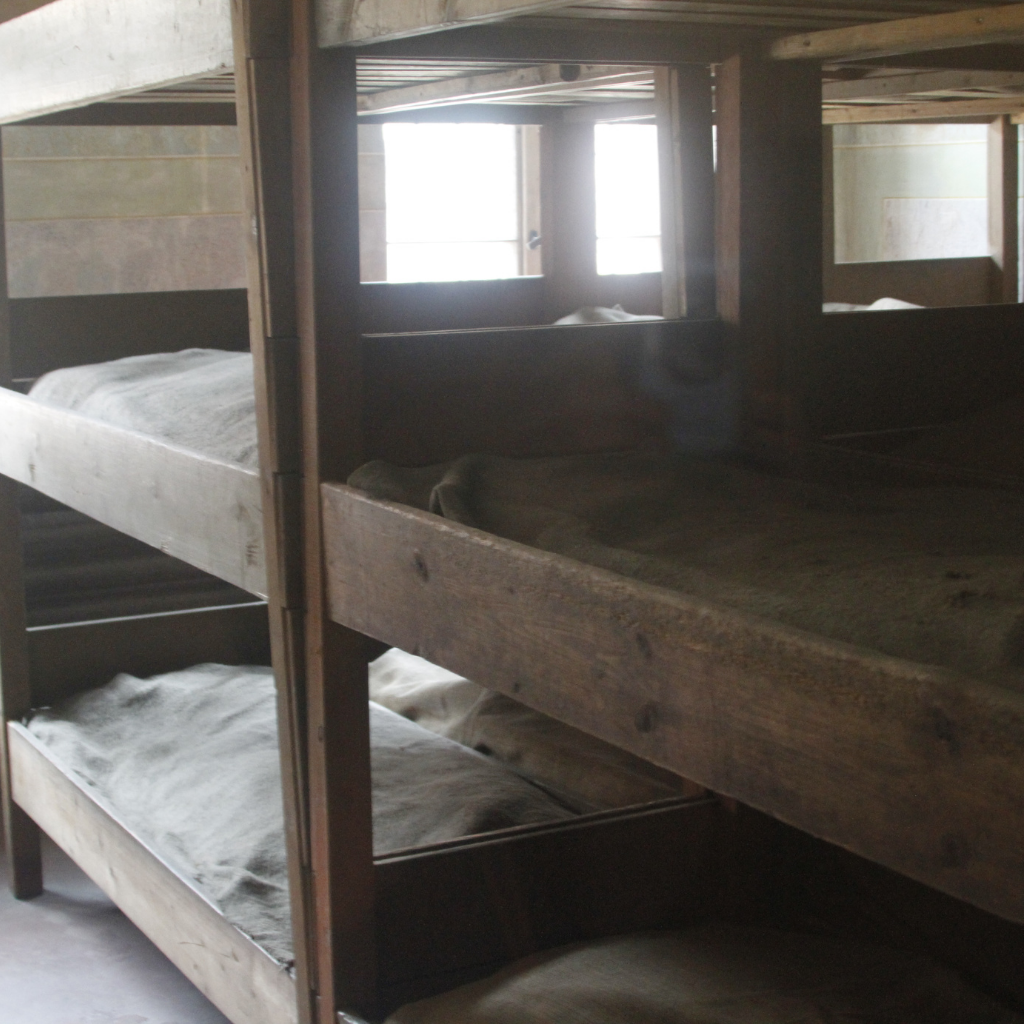Nazi Germany’s Death Camp Series – Part 1 Auschwitz

We begin this series on Nazi Germany’s Death Camps, with Auschwitz, likely the most well known of the concentration and extermination camps of World War II.
In this article, we’ll delve into the opening of the camp, a few key Nazi leaders, some numbers and statistics, and much more.
The study of the Holocaust is a difficult one to embark on, but we must never forget how vulnerable a nation can become. Even a nation of intelligent, contributing individuals can find themselves in such a state that they do things they normally would never do.
There is no excuse for the levels of evil that people stooped to to save their own backsides during World War II, but we have to be careful not to judge too harshly, for we do not know how we would have acted in such a situation.

A Brief Overview of the Holocaust
The Holocaust started on January 30, 1933 and ended on May 8, 1945 (VE Day). It was a well organized, carefully thought out, systematic state-wide persecution of the Jewish people.
There was not one Jewish community in Europe unaffected by the atrocities of World War II.
Six million Jews were murdered, including one million children.
Where did this hatred stem from?
“Holocaust” is Greek for “Sacrifice by Fire”
Persecution of the Jewish race is not unique to World War II. In fact, it has been around as long as Jewish people have been around. What makes this period of history especially ripe was that Hitler exploited the present anti Semitism as a political weapon to gather the public’s support. He encouraged people to focus all the blame of Germany’s problems, such as their defeat in World War I, the economic and unemployment situation due to the depression, and the ever present threat of communism, on the Jewish ‘menace’.
Things were bad in Germany and people were open to almost anything, regardless of how radical or questionable it was.
Hitler skillfully promoted the German Aryans as the superior race, being above all others in athleticism, physical features, intelligence, and promise. The wounded German population was eager to buy into this, easing the pain of their demise in World War I.
The Holocaust Could Have Been Avoided
If only the U.S. and Great Britain had been willing to accept Hitler’s offer to take in Jewish refugees, the Holocaust might have been avoided. Sadly, they refused.
Let’s Look at the Numbers
- One third of the Jewish community was murdered during the Holocaust.
- Over one million children were murdered during the Holocaust.
- The Nazi state generated roughly 60 million Reichsmarks from slave labor at Auschwitz during the Holocaust. (Roughly equivalent to $171,762,500 U.S. today)

Key Facts about Auschwitz
- Auschwitz (Konzentrationslager Auschwitz in German) was located in the southern part of Poland, 37 miles west of Krakow.
- The Auschwitz death factory was comprised of more than 40 concentration and extermination camps.
- Auschwitz was the largest of all the camps and became the main “killing center” of European Jews.
- The “Final Solution to the Jewish Question” was executed at Auschwitz.

Want to learn more about World War II? Check out our post: World War II – 18 Important Dates to Know
- The I.G. Farben plant opened in May of 1942 near Auschwitz. They specifically opened a plant there so they could use the Jewish prisoners from the camp as forced labor in their synthetic-rubber and petroleum plant.
- I.G. Farben manufactured Zyklon B, a cyanide-based pesticide used at Auschwitz, and other camps, to kill over one million people in gas chambers.
- Conditions were rough for the prisoners working at I.G. Farben and by 1945, roughly 25,000 laborers had died while working in the plant.

Let’s Look at the Numbers Related to Auschwitz
- An estimated 1.3 million people were sent to the Auschwitz Concentration Camp.
- It’s estimated that over 232,000 children were sent to Auschwitz.

- Of the 1.3 million sent to Auschwitz, 1.1 million were killed immediately upon arrival in the gas chambers.
- Twenty percent of Jews died at Auschwitz.
- The barracks held up to 1,200 prisoners; they were built to hold only 700.

- There were 8,400 people employed at Auschwitz.
- 928 prisoners from Auschwitz attempted to escape.
- 196 successfully escaped Auschwitz.
- As the allies approached, the Nazis tried to hide their crimes. They started Death Marches on January 18, 1945, where they forced nearly 60,000 prisoners on marches through the freezing snow.
- Those who stumbled or fell behind were shot dead. Over 15,000 prisoners die during the Death Marches.

- The Soviet Army liberated roughly 7,000 prisoners on January 27, 1945.
- After the war, 673 members of the staff at Auschwitz were charged with crimes.

4 Shocking Photos of Some of the Prisoners’ Belongings Found after Auschwitz was Liberated.




The Commandants of Auschwitz
Auschwitz saw three different Commandants during its five years of operation. The role of Commandant gave total reign over the camp and everyone in it, staff and prisoners alike. He was to be feared, and feared he was.
Rudolf Höss – Auschwitz’s First Commandant
SS-Obersturmbannführer Rudolf Höss was the camp’s first Commandant.
Höss had served in World War I and joined the Nazi Party and became a member of the SS (Schutzstaffel) in June of 1934, renouncing the Catholic Church.
Shortly after, he started working on the staff at Dachua Concentration Camp. By 1940, he was leading Auschwitz.
He quickly made his mark at Auschwitz, converting it to a total extermination camp. He had gas chambers and crematoria built and continued to streamline the killing process, devising more and more efficient methods of gassing and cremating the Jews.
At its optimum peak, 2,000 prisoners could be killed every single hour.
In early 1942, Adolf Eichmann, a Nazi high official, visited Auschwitz and spoke with Höss. He recounted the following:
“Höss, the Commandant, told me that he used sulfuric acid to kill. Round cotton wool filters were soaked with this poison and thrown into the rooms where the Jews were assembled. The poison was instantly fatal. He burned the corpses on an iron grill, in the open air. He led me to a shallow ditch where a large number of corpses had just been burned.” —Rudolf Höss (Source: https://www.jewishvirtuallibrary.org/)
The poison was instantly fatal.
He later changed his killing methods and introduced Zyklon B by mid-1942.

Höss and his family lived on the grounds of Auschwitz.
After the war, he was tried and sentenced to death by hanging at Auschwitz.
Before his death, he recounted how he felt killing the children. The fact that he became weak-kneed pushing all the screaming and pleading children into the gas chambers made him feel ashamed as a Nazi leader.
“I did, however, always feel ashamed of this weakness of mine after I talked to Adolf Eichmann. He explained to me that it was especially the children who have to be killed first, because where was the logic in killing a generation of older people and leaving alive a generation of young people who can be possible avengers of their parents and can constitute a new biological cell for the reemerging of this people.” —Rudolf Höss (Source: https://www.jewishvirtuallibrary.org/)

He acknowledged his responsibility for everything under his command and declined to appeal for leniency. He was hung a few dozen yards from the house his family lived in on the camp grounds, near Crematorium I.
Subsequent Commandants included:
SS-Obersturmbannführer Arthur Liebehenschel & SS-Obersturmbannführer Richard Baer.
Key Guards at Auschwitz
We’re going to look at two key female guards at Auschwitz, Irma Grese and Maria Mandel.
Irma Grese
Irma was a real peach. She was sadistic, cunning, calculating, a down right cruel bitch.
Born in 1923, she was quite young when she volunteered to work at Ravensbrück Concentration Camp. Before too long, she was promoted and transferred to Auschwitz-Birkenau. (She was only 19 years old at this time.)
She was known to wear heavy boots and always carried a braided whip and a loaded pistol.
Using a combination of physical, emotional, and psychological torture, she enjoyed whipping prisoners, usually for no reason at all, to a pulp, if not dead. She would also encourage her hungry dogs to attack prisoners and used her pistol to deliver the death blow faster.
She participated in the selection process for new arrivals, determining who would be sent to the gas chambers and killed immediately, and who would be ‘spared’ another day, as prisoners of Auschwitz.
Prisoners referred to Grese as “The Hyena of Auschwitz” and also “The Beautiful Beast“.
Grese was tried and convicted of her crimes of miss-treatment and murder of prisoners and sentenced to death by hanging.
She reportedly sang Nazi songs the night before her execution.
The Hyena of Auschwitz was hung for her crimes on December 13, 1945, the youngest female, at 22 years old, to die judicially under British law.
Maria Mandel
Maria Mandel was another sadistic little bitch who also worked at Ravensbrück before being transferred to Auschwitz. (See a pattern forming here?)
Austria born, Mandel joined the SS in 1938 at 28 years old.
At Auschwitz, she took part in the new arrival selections and also had her hand in some of the unspeakable medical experiments that took place on the prisoners.

Mandel was referred to as “The Beast” by prisoners because of her enjoyment while making the new arrival selections of the women and children for the gas chambers.
She loved classical music and organized a female orchestra in Auschwitz. The women prisoners would play at the selections and the roll-calls.
The courts tried and convicted Mandel for her part in the selections and medical experiments, as well as torturing prisoners and hung on January 24, 1948 at aged 36.
Wrap Up
The study of the Holocaust is something I feel is important to keep top of mind. It is a challenging topic to focus on, because it hurts and angers me to read about the cruelty that seemed to come all too easy with so many people.
So many beautiful and talented souls were murdered during World War II, all in the name of Hate & Racism. We have to strive for a better tomorrow by remembering how ugly yesterday was.
Related Posts
World War II – 18 Important Dates to Know
World War II – Important Dates to Know covers 18 dates we find especially interesting…
February 25, 20212 COMMENTS
Leave A Comment
Error: API requests are being delayed. New posts will not be retrieved for at least 5 minutes.
There may be an issue with the Instagram access token that you are using. Your server might also be unable to connect to Instagram at this time.
Click here to troubleshoot.




Jennifer | 28th Jul 21
So sad!!!
22 Facts about World War II - Burning Curiosity | 22nd Aug 21
[…] out our article: Nazi Germany’s Death Camp Series – Part 1 […]